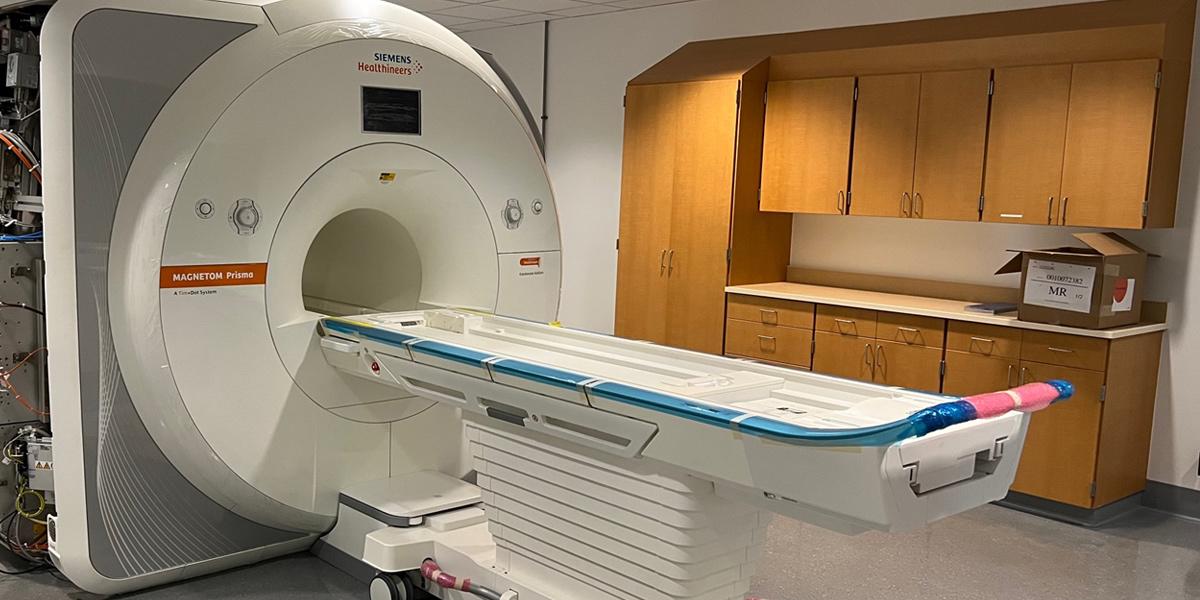A clear view
New MRI machine enhances care at UMN's small animal hospital

New MRI machine enhances care at UMN's small animal hospital
The Lewis Small Animal Hospital's new MRI on display/ Photo courtesy of Chris Ober.
A new MRI machine will make imaging safer, faster and clearer.
MRIs use radio waves and powerful magnets to create detailed images of a body’s soft tissues. The scans allow veterinarians to peer into pets’ brains, spinal cords, muscles, tendons, and ligaments.
The Lewis Small Animal Hospital is currently one of just three veterinary hospitals in the area that have an MRI machine, and the upgrade will make the process faster, cheaper, and safer.
“The biggest thing people use to describe an MRI system is how strong the magnet is,” says Dr. Christopher Ober, medical imaging residency director at the University of Minnesota (UMN) College of Veterinary Medicine (CVM).
Most MRIs have magnets with a strength 1.5 tesla. At 3 tesla, the magnet in the new MRI machine is twice as strong.
“What that means is you get more signal out of your patients,” Ober says.
This signal will allow veterinarians at the Lewis Small Animal Hospital to take high quality pictures of soft tissues, and take those images in less time than the old machine—a key safety feature.
“Because our patients need to be anesthetized, time is super important. The longer the time a patient is under anesthesia, the higher risk it is,” Ober says.
But it’s not just the new hardware that will make a difference.
“Some of the hardware components in MRI machines are built to human specifications, but a human head and a dog head and cat head don’t look the same,” Ober says.
The new machine, which is scheduled to be up and running by June, comes with more flexible software packages that will be particularly useful in veterinary medicine.
“It provides a lot more flexibility to get better scans of our patients than would be possible without the software,” Ober says.
Nearly 400 animals—mostly cats and dogs—underwent an MRI at the Lewis Small Animal Hospital last year, which was fewer than the hospital sees in non-pandemic years. According to Ober, the need is growing.
“We’re seeing more and more patients who have diseases that can be diagnosed with MRI,” he says.
The majority of these diagnoses are in pets that have issues with their brain or spine. The new MRI machine will allow Ober and his team to get a clearer view of how things like neurological diseases and seizures are behaving in the brain. He also expects to continue to help diagnose spinal injuries, especially in dachshunds that have a herniated disk.